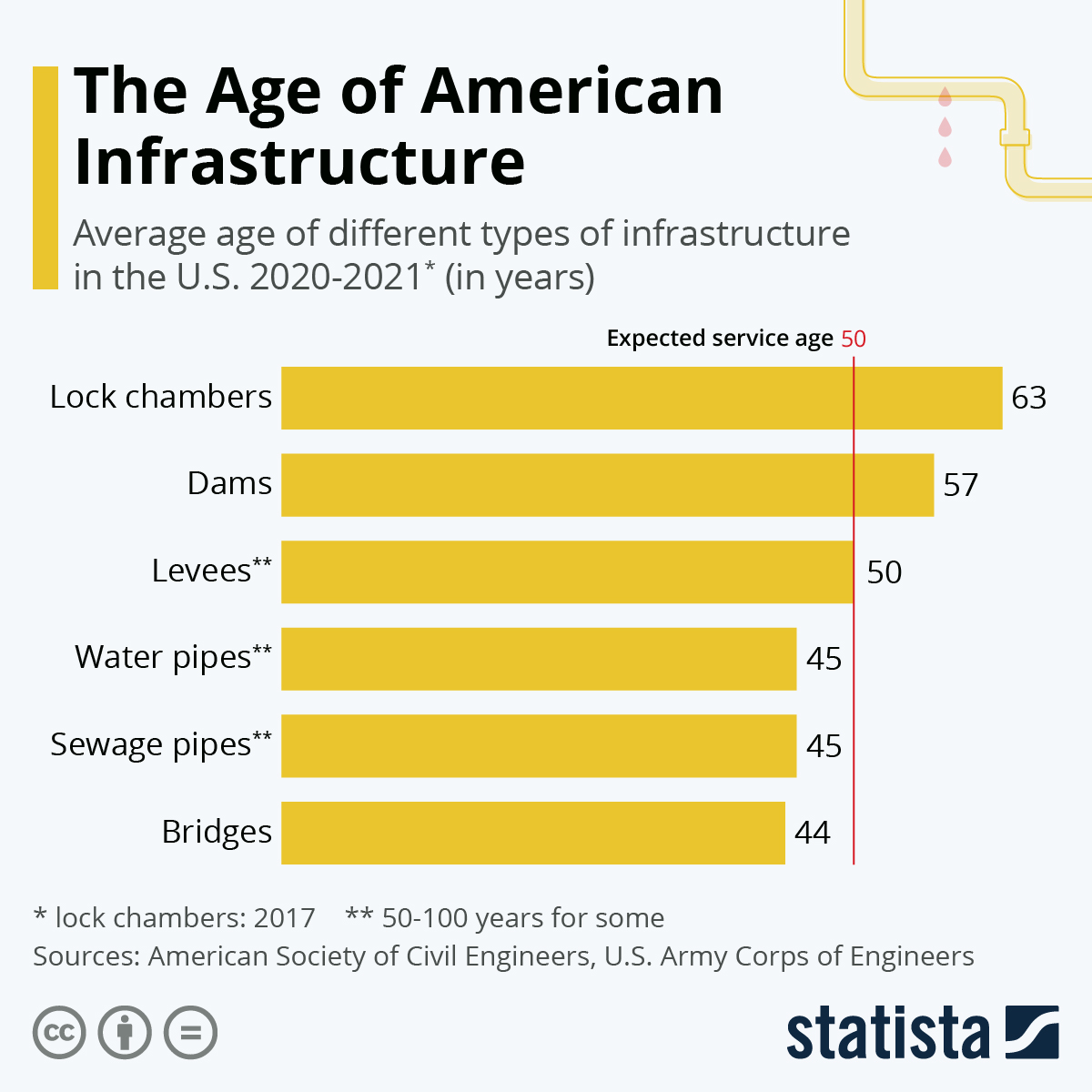American physical infrastructure has been famously crumbling for years, but a new coordinated effort to save aging bridges, dams or levees is likely underway. U.S. President Joe Biden announced yesterday that a bipartisan group of senators had reached a consensus on a slimmed down infrastructure bill, which would – once passed – allocate $579 billion in infrastructure spending.
The administration has said that it hopes to spend $1.2 trillion in infrastructure over the next eight years – a step down from the initial $2.3 billion of Biden’s American Jobs Plan. The new proposal does not include spending on so-called human infrastructure like day care, which Democrats had hoped for.
A look at data from the American Society of Civil Engineers and U.S. Army Corps of Engineers shows how far U.S. infrastructure has actually aged. In its most recent Report Card For American's Infrastructure, published this year, the Civil Engineers calculated the average age of dams and levees at 50 and 57, respectively, putting them at or beyond their expected service age. Water pipes, sewage pipes and even the much citied bridges stayed under the 50-year line. The oldest piece of infrastructure in the U.S. are actually lock chambers used for inland waterways like the Mississippi, Tennessee, Illinois or Ohio rivers. Other than ubiquitous pipes and bridges, the Army Corps of Engineers counts only 218 in the United States. Most of them were built between the 1930s and 1950s, putting their average age at 63 even in 2017.
The American Society of Civil Engineers puts the expected service age of most of the mentioned types of infrastructure at 50 years, while some levees as well as water and sewage pipes are expected to hold up 100 years. The U.N. also applies the 50-year mark to dams. While it is well known that many pieces of infrastructure can function beyond their expected service age, the date gives an indication as to when major repairs, renewals and the need for a heightened maintenance and investment effort can be expected.





















